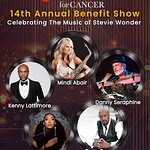MDA, the Muscular Dystrophy Association, has announced that the new realities of television viewing and philanthropic giving have made this the right time for the organization to move beyond its historic Labor Day telethon.
It will discontinue production of a broadcast telethon effective this year.
MDA plans to invest more in digital and mobile channels for consumer engagement and activation. The organization will continue to share the inspirational stories of MDA families on Labor Day and throughout the year via digital channels as part of an emerging year-round plan to revitalize its brand, connect with donors more frequently, strengthen family support, and attract and recognize sponsors in new ways.
“The decision to end our beloved telethon was not made lightly,” said MDA President and CEO Steven M. Derks. “In the last few years, the show was adjusted to reflect changes in viewership and donor patterns, and last summer’s Ice Bucket Challenge once again affirmed for us that today’s families, donors and sponsors are looking to us for new, creative and organic ways to support our mission.”
The first telethon aired in 1956 and has attracted America’s most famous celebrities over the years, none more prominent than the legendary Jerry Lewis, who emceed the event through 2010. For decades, the telethon was instrumental in raising awareness and donations to save and improve the lives of kids and adults fighting muscular dystrophy, ALS and other life-threatening diseases that severely limit muscle strength and mobility.
MDA will transition from the television-based telethon, most recently named the “MDA Show of Strength Telethon,” to personal shows of strength, building on its rich tradition around consumer activation and compelling stories that inspire, entertain, and most importantly, incite urgent action.
“We have ambitious plans to leverage our history, the compelling stories of our families and our record of innovation — just like we did decades ago when we introduced the telethon and cause-marketing for nonprofit organizations — as we continue to use creative ways to connect with supporters and deliver more value for our sponsors, never forgetting the families who are at the very heart of our mission,” Derks said.
Future MDA Plans
To fund future work, MDA will build on programs tied to its brand promise of seeking muscle health and strength and advancing everyday activities — the ability to walk, talk, run, hug and even breathe — for kids and adults with these debilitating diseases.
Last year, MDA launched a highly successful endurance fundraising initiative in which walkers and runners can participate in marathons and other endurance events to raise donations for the fight, in essence using their muscles to strengthen others. MDA has also expanded the number of local Muscle Team events, featuring professional athletes who ‘buddy up’ with a child affected by muscular dystrophy to encourage support, as well as an increase in the number of ALS-specific galas in new markets. In addition, MDA’s Muscle Walk program has grown in locations and participants from coast to coast, raising more than $20 million since the program’s inception in 2011.
MDA is now executing an ambitious five-year plan to redouble and refocus its research investments; introduce more clinical trials through partnerships with medical institutions and drug developers; improve the quality of care, services and therapies for families; and open new channels to connect with children and adults who need MDA’s assistance. In 2014, MDA funded 250 research projects in 11 countries. It also operates a network of more than 150 clinics nationwide assisting more than 100,000 registered families.
MDA continues to partner with longtime and new sponsors at the national and local level. The Diamond Partner list includes the International Association of Fire Fighters (IAFF), Harley-Davidson, Lowe’s, CITGO Petroleum Corporation, Jiffy Lube, Price Chopper, Casey’s General Store, Kroger and Acosta. Their members, employees and customers give millions to MDA each year through branded programs. MDA is upgrading its digital assets and social media platforms to enhance collaborative opportunities that better align with its sponsors’ needs and create unique and more specific ways for employees and consumers to engage.
“America’s fire fighters have stood shoulder to shoulder with MDA for more than 60 years, and together we’re changing with the times,” said Harold Schaitberger, General President of the IAFF, MDA’s single-largest supporter that contributed $26.8 million in 2014. “The kids and families MDA helps have always been our heroes, and we’re not stopping until we find cures.”
Rich Telethon History
The first telethon in 1956 was co-hosted by Jerry Lewis and Dean Martin. MDA’s first Labor Day weekend telethon was broadcast in 1966 on a single New York station and went on to become the most successful fundraising event in the history of television. The real stars on the broadcast have always been the MDA families who have graciously agreed to open their homes and hearts to America and tell their stories of strength.
“For many MDA families, the telethon has represented a Labor Day tradition that connected us all in some way because our stories, triumphs and experiences are very similar,” said Jenny Imhoff, the mother of MDA’s National Goodwill Ambassador Reagan Imhoff." There’s some sadness tied to the end of the telethon, but there’s also a great deal of excitement for what’s to come, and our family has every confidence in the direction MDA is taking to deliver to us something more than hope, but the ultimate gift of strength and health for Reagan."
A marquis roster of Hollywood’s most prominent celebrities have appeared on the MDA telethon, including: Frank Sinatra, Dean Martin, Sammy Davis Jr., John Lennon, Michael Jackson, Billy Crystal, Robin Williams, Jerry Seinfeld and Celine Dion. In recent years, talent on the MDA stage has included Carrie Underwood, Pitbull, Ryan Seacrest, Luke Bryan, will.i.am and Jennifer Lopez.
“If not for the telethon and the benevolence of Jerry Lewis and other celebrities who followed, we would not be at this hopeful point in our journey to find treatments and cures,” Derks said. “Kids and adults are living longer and growing stronger, and our resolve to help save and improve lives has never been greater.”
Each year’s telethon success has reflected grassroots support of telethon-related special events nationwide, as well as direct marketing initiatives; sponsor-driven fundraising activities; and pledges and contributions made to MDA by phone, text and online donations during the broadcast.
As it has expanded other sources of income, MDA cut back on its telethon broadcast, moving from a 21½-hour show in 2010, Lewis’ last year hosting, to a six-hour show in 2011, three hours in 2012 and two hours in 2013 and 2014, which were exclusively broadcast on ABC. In 2012, the telethon was renamed the “MDA Show of Strength Telethon” and became principally an entertainment special intended to raise awareness for MDA and the national sponsors who volunteer and help raise funds.






